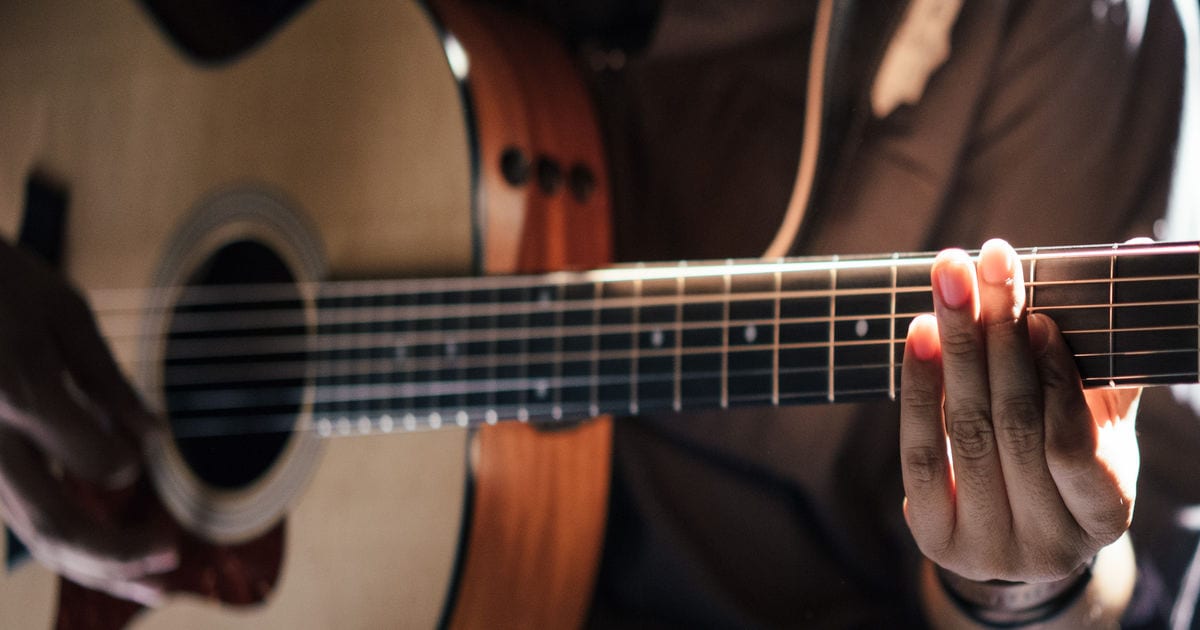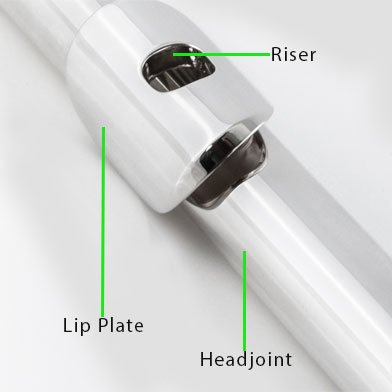1. How do you clean your flute?
A flute player should only look to clean the inside and outside of the flute. Some websites will advise on cleaning separate parts of the flute which would necessitate taking parts of the flute apart. This isn’t advised for children or people who don’t know how technically to put the flute back together. A regular flute will come apart into three sections. All three sections can be cleaned using a cleaning rod with a soft cloth attached that goes through the three tubes. This takes the moisture out which keeps the inside clean. The outside of a flute can be kept clean by using a silver cleaning cloth or merely a duster. You don’t need a silver cloth on a nickel-plated flute.
When a flute is serviced by a trained technician the flute will be completely stripped of all it’s key work and thoroughly cleaned top to bottom. This will include the cork that sits at the top of the head joint on a flute.
2. Why does a flute tarnish?
Flutes can tarnish if not cleaned regularly, or from oils in the skin of the person holding and playing the flute or from heat such as halogen lights. If the flute is silver plated, silver cleaning fluid and a cleaning cloth will remove the tarnish. If the flute is nickel plated, you can try and clean the tarnish using silver polish but if it is stubborn then a flute technician will be able to clean the flute and make it look silver and shiny again using a chemical formula that isn’t available to the public.
3. What is the best flute for a beginner?
There are so many flutes on the market it is difficult to come up with a definitive answer. It also depends on budget and size of the prospective player. There are plastic models now available, but these are purely for young players, or may be used by schools as classroom instruments. If a player is small and can’t hold a full-sized flute, then you will need to look at curved head flutes. This enables younger/smaller players to start the flute but on a proper instrument. Trevor James, Jupiter and Yamaha all do curved head flutes that are a good student standard, and these are the flutes that are recommended by Musical Instrument Hire. If you buy a flute based on the price and because it seems a good deal it may turn out to be badly made and not enable a new or young player a fair start on learning. Some flutes are so poorly made that they are difficult to play and need a lot of repairing as parts don’t work. This can be very disruptive to learning.
4. How much does it cost to have a flute re-padded?
A flute will only need re-padding occasionally but when it does, it needs to go to a qualified technician who will assess whether it needs a complete re-pad or just a few pad’s replacing. The pads on a flute need replacing when they don’t “sit” properly and seal the holes when the flute is played. Also, they can tear and again won’t seal properly if torn. Over time they can just wear out and need replacing. A complete re-pad will cost anything from £120.00 and a good technician will advise on any other work that needs doing at the same time.
5. What is a flute pad?
A flute pad is cardboard backed, with a felt disc and gold beaters’ bladder as the skin.
6. How do you hold a flute?
A flute is held horizontally to the right of the flautist. The left hand is nearer the body and faces the flautist and the right hand is at the bottom of the flute and faces away from the body.
7. Is the recorder a flute?
The recorder is in the same family of instruments – woodwind - as a flute and is very close to the fingering of a flute but it is a different instrument. Recorders can be wooden or plastic whereas flutes can be wooden, plastic (fife) or made from metal.
8. How many sizes of flute are there?
There are twelve sizes of flute. The regular flute is a concert flute and is fourth in size. A piccolo is the smallest flute (the size of a descant recorder). The largest flute is a hyper bass flute and is over 8 meters long. Its lowest note is believed to be below a normal range of hearing for a human!
9. What is the best brand of flute?
There isn’t a definitive best brand of flute. It all depends on the age, standard and budget of the player. It is a false economy for any player to purchase an in-expensive flute – they just are not fit for purpose, won’t play properly and will need many trips to a repairer for various niggle issues that can arise on a flute that isn’t built properly. Musical Instrument Hire use the brands Jupiter, Trevor James and Yamaha as their standard student flute. All three are good examples of well-built, fit for purpose student instruments. They all also come with curved head options. As a player progresses they will want to look to progressing to a flute with a solid silver head, open holes or an even higher specification of flute. Flutes will be categorised into student, intermediate, advanced and hand-made flutes.
10. Are all flutes silver?
Most flutes are silver, but you will see wooden flutes now and again, and there are different “grades” of the silver flute. Musical Instrument Hire flutes are all silver plated and this is a good standard for a student flute. A lower grade of flute will be nickel plated and this basically makes the flute cheaper and the sound quality won’t be as good. A solid silver head on a silver plated bodied flute will be a higher quality, and likewise a fully solid silver flute will be better again. You can get gold plated & platinum plated flutes too, alongside customised flutes with different coloured metals as the player requires.
11. What is the difference between an open and closed hole flute?
Student flutes will all be closed hole flutes. This enables the key to be pressed down and the hole it covers to be completed covered. It helps a young player learn the keys and notes on the flute with less difficulty. An open hole flute is for the more advanced player and it is argued that an open hole flute gives a better tone as there is more scope for the sound to come out of the flute. Open hole flutes will come with “plugs” that can be put in on certain keys if required.
12. How much is the most expensive flute in the world?
The most expensive flute sold at auction is $187,000 in 1986. This however wasn’t a regular flute and had been specially made and owned by a famous flautist. The most expensive flute to buy of the shelves is around £26,000! A normal expensive student flute you would look to pay around £600.00. There are so many brands and standards of flute though it is difficult to pin-point one pay bracket.
13. Who is the best flautist of all time?
There isn’t a best flautist of all time as there are several amazing musicians through the ages. Also, flautists play in different styles and appeal to different audiences. There are several lists available on the internet covering flautists through the ages, classical flautists etc. As with any lists of “the best” it is also often a matter of opinion depending on what the listener is looking for.
14. How do you get a sound out of a flute?
A sound on a flute is achieved by blowing across the hole on the head-joint of a flute. You don’t play directly into the hole. It is like blowing across the top of a glass bottle.
15. How long is a flute?
A regular concert flute is 67 cm. There are many other flutes and apart from the piccolo they are all longer than the concert flute. A concert flute will come apart into three sections to fit into its case.
16. When did the flute first get invented?
The very first flute thought to be invented was between 30,000 and 37,000 years ago and made from a tusk. It had three holes and wasn’t as long as flutes are today. The first western concert flute was created in around 1847 although there are many variants around the world, but this is the closest to the flute we know as a regular concert flute.
17. What is a gizmo key on a flute?
The gizmo key is on the foot joint of a flute with a B foot joint. The key closes the low B tone hole which enables the flautist to play the high notes more easily. The gizmo key was introduced by Verne Q Powell.
18. What does a split E mechanism mean?
The high notes on a flute can be challenging for advanced players and the split E mechanism is an extra arm that joins the keys between G and E enabling the fingering for top E to be used but giving a more secure tone on the high note.
19. What is an offset G on a flute?
The keys on a flute can be “in-line” or offset. Most student flutes will have offset keys which suits the hand position of a student better. Keys in-line is usually for a more advanced player, but it will depend on what a student is used to more than anything.
20. What are trill keys on a flute?
Trill keys enable notes to be played very quickly – especially for C and C#. They are on the lower main body of the flute and played by the right hand second or third finger. They can be used for other notes too. Trills are common in flute music and these two little keys enable the player to give this detail in their playing.






